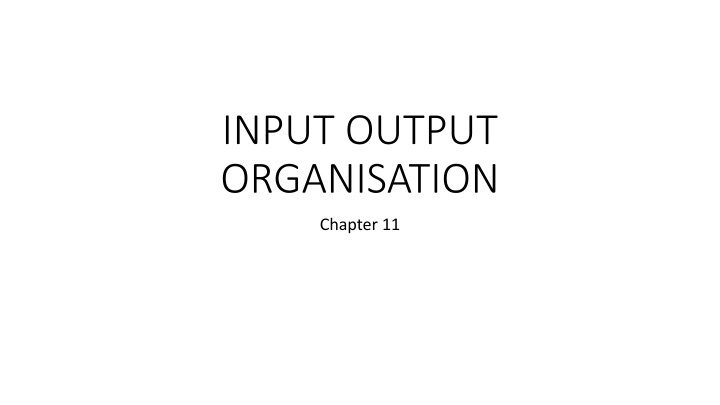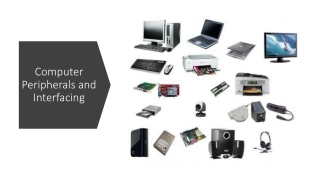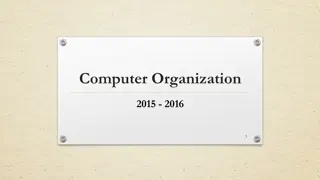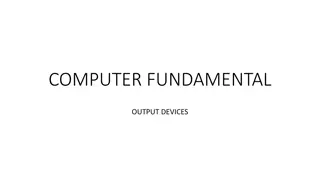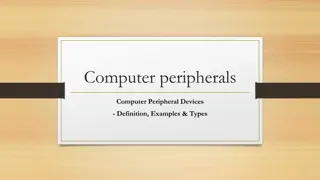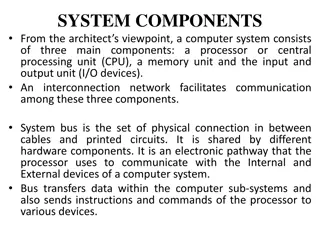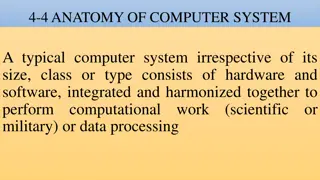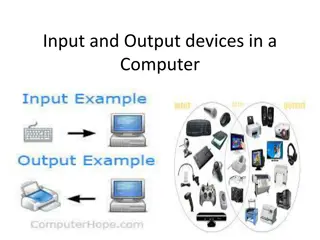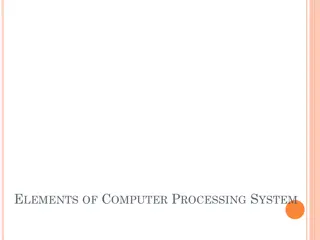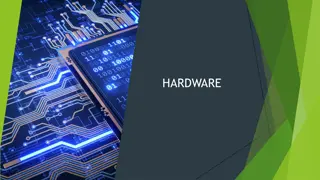Peripheral Devices and Communication in Computer Systems
The input-output subsystem of a computer system facilitates communication between the central system and external environment through peripheral devices like keyboards, monitors, and printers. Monitors available today include CRT, LCD, LED, and TFT technologies. Various types of printers such as inkjet and laser printers cater to different printing needs. ASCII, a character encoding standard, enables electronic communication using alphanumeric characters. It utilizes 7 bits to code 128 characters, with 94 being printable and 34 non-printable. Control characters like STX and SP help in layout control, data separation, and text transmission between remote terminals.
Download Presentation

Please find below an Image/Link to download the presentation.
The content on the website is provided AS IS for your information and personal use only. It may not be sold, licensed, or shared on other websites without obtaining consent from the author.If you encounter any issues during the download, it is possible that the publisher has removed the file from their server.
You are allowed to download the files provided on this website for personal or commercial use, subject to the condition that they are used lawfully. All files are the property of their respective owners.
The content on the website is provided AS IS for your information and personal use only. It may not be sold, licensed, or shared on other websites without obtaining consent from the author.
E N D
Presentation Transcript
INPUT OUTPUT ORGANISATION Chapter 11
Peripheral Devices The input output subsystem of a computer system provides communication between central system and outside environment. Input Output devices attached to the computer are called peripherals .examples: keyboard,monitor,printer etc.
Monitors available these days: CRT (Cathode Ray Tube) LCD(Liquid Crystal Display) LED TFT Different types of printers : Inkjet printers Laser printers etc
ASCII Alphanumeric Characters A character encoding standard for electronic communication. Abbreviated from American Standard Code for Information Interchange. Communication between people and computer involves use of alphanumeric characters. The standard binary code for alphanumeric characters is ASCII
It uses 7 bits to code 128 characters. 94 of the encoded characters are printable: these include the digits 0 to 9, lowercase letters a to z, uppercase letters A to Z, and 32 special characters (eg %,*,$ etc) In addition, there are 34 non-printable characters :
Eg. STX(Start of Text),SP(Space)etc. There are 3 types of control characters: 1. Format Effectors: Used to Control the layout of printing Eg: backspace(BS),horizontal tab(HT) etc. 2. Information Separators: Used to separate data into divisions like paragraphs and pages .eg record separator(RS) and File Separator(FS)
3. Common Control Characters: Useful during transmission of text between remote terminals. Eg: STX(Start of Text), ETX(End of text)
